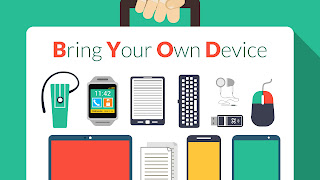Twitter Feed
Craigslist.org Founder Hypes Government Transformation
Craig Newmark, best known for being the founder of the Craigslist website, is working hard to get the word out on Gov2.0. Last week in FedScoop, he really laid out…
Maria Spinola: An Essential Guide to Cloud Computing
Maria Spinola, a Strategic IT Marketing and Innovation Adviser and editor at www.Cloudviews.org, has recently published An “Essential Guide to Possibilities and Risk of Cloud Computing“. Her very pragmatic approach…
US Interior Department IT Infrastructure Vision
Tim Quinn, Chief Infrastructure Officer, US Department of Interior, sees IP convergence as a key part of DoI’s future IT infrastructure. During the Federal News Radio Executive Forum, he also…
DHS Acting CIO Margie Graves on Current DHS Challenges
During the Federal News Radio Executive Forum, Department of Homeland Security (DHS), Acting CIO, Margie Graves provides a unique insight on the department. In her remarks, she described the challenges…
DHS EAGLE & First Source Digital Guide Launched
The Enterprise Acquisition Gateway for Leading Edge Solutions (EAGLE) is a multiple-award indefinite delivery/indefinite quantity (IDIQ) contract vehicle, specifically designed as the preferred source of information technology (IT) services for…
Looking Forward To GovIT Expo!
I am humbled and more than pleased to serve as the Technical Chair of SYS-CON’s 1st Annual Government IT Conference & Expo. To highlight the importance of this conference, I…
Publishing Synergy: Blog, Twitter and Ulitzer
Have you ever been given the task of building and executing an aggressive customer outreach program? Well I received my assignment about a year ago and trust me; the budget…
Input: Cloud Computing, Security to Drive US Gov’t IT Spending
According to a PC World article, cloud computing and cybersecurity will be the high-growth areas for government IT spending over the next few years. The analysis and consulting firm Input…
GovIT Expo 2009
I’m happy to announce my appointment by SYS-CON to be the Technical Chair of the 1st Annual Government IT Conference & Expo. This event is a 1-day deep dive into…
NCOIC To Help FAA on NextGen
Today, the U.S. Federal Aviation Administration (FAA) and the Network Centric Operations Industry Consortium (NCOIC™) announced an agreement to work together to advance the Enterprise Architecture of NextGen, FAA’s national…
- Increased employee mobility (63%), satisfaction (56%) and productivity (55%) dominate as the top drivers of BYOD. These employee related drivers are considered more important than reduced costs (47%).
- Security (39%) and employee privacy (12%) are the biggest inhibitors of BYOD adoption.
- 20% of surveyed organizations have suffered a mobile security breach, primarily driven by malware and malicious WiFi.
- Security threats to BYOD impose heavy burdens on organizations’ IT resources (35%) and help desk workloads (27%).
- Despite increasing mobile security threats, data breaches and new regulations, only 30% of organizations are increasing security budgets for BYOD in the next 12 months and 37% have no plans to change their security budgets.
- 72% – Data leakage/loss
- 56% – Unauthorized access to company data and systems
- 54% – Downloading of unsafe apps or content
- 52% – Malware
- 50% – Lost or stolen devices
- 49% – Vulnerability exploitation
- 48% – Lack of control on endpoint security
- 39% – Infrequent software updates
- 38% – Compliance
1. Create your policy before procuring technology: To effectively use mobile device management (MDM) technology for employee owned devices Policy must precede technology. Also note that these policies will have broad corporate-wide implications for IT, HR, legal, and security.
- Mobile device management
- Application security assessments
- Application testing services
- Application source code security assessments; and
- Embedded device security.
This post was brought to you by IBM Global Technology Services. For more content like this, visit ITBizAdvisor.com.
( Thank you. If you enjoyed this article, get free updates by email or RSS – © Copyright Kevin L. Jackson 2017)
Cloud Computing
- CPUcoin Expands CPU/GPU Power Sharing with Cudo Ventures Enterprise Network Partnership
- CPUcoin Expands CPU/GPU Power Sharing with Cudo Ventures Enterprise Network Partnership
- Route1 Announces Q2 2019 Financial Results
- CPUcoin Expands CPU/GPU Power Sharing with Cudo Ventures Enterprise Network Partnership
- ChannelAdvisor to Present at the D.A. Davidson 18th Annual Technology Conference
Cybersecurity
- Route1 Announces Q2 2019 Financial Results
- FIRST US BANCSHARES, INC. DECLARES CASH DIVIDEND
- Business Continuity Management Planning Solution Market is Expected to Grow ~ US$ 1.6 Bn by the end of 2029 - PMR
- Atos delivers Quantum-Learning-as-a-Service to Xofia to enable artificial intelligence solutions
- New Ares IoT Botnet discovered on Android OS based Set-Top Boxes


